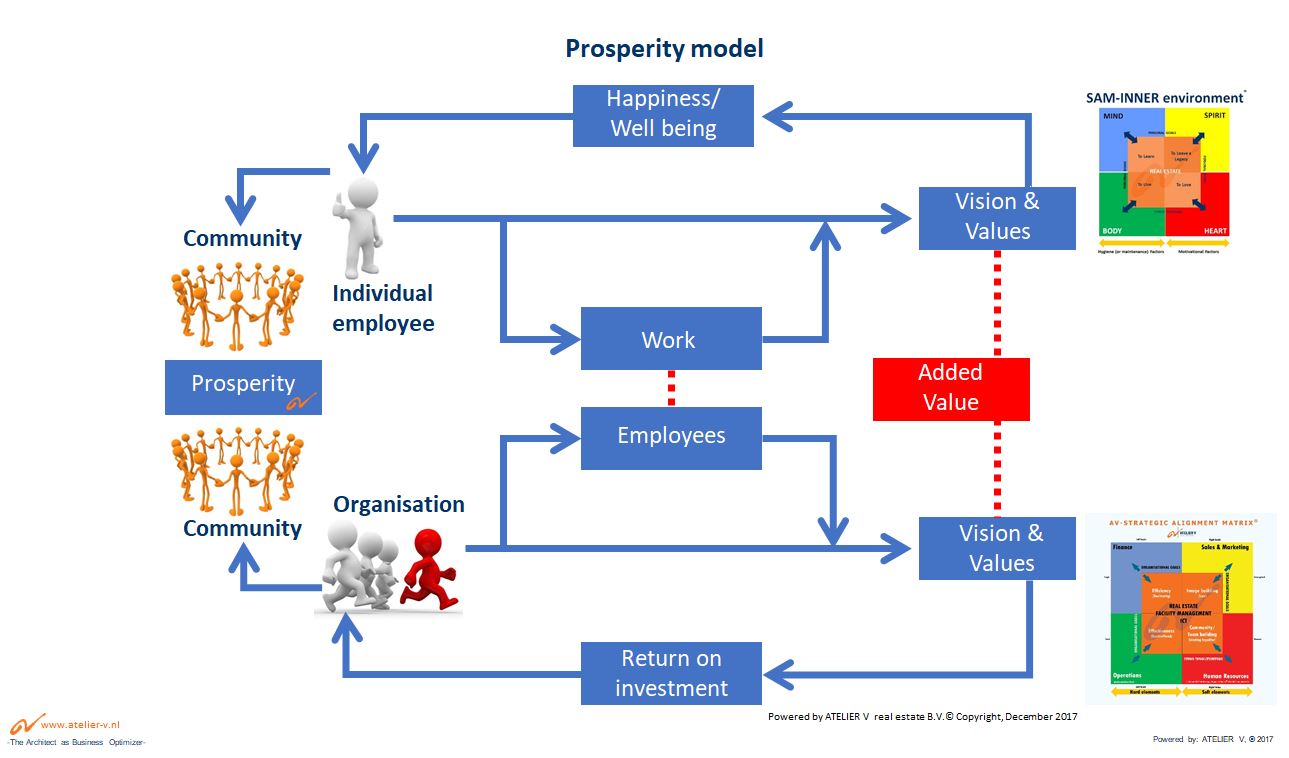“In a free enterprise the society is not just another stakeholder in business
but in fact the very purpose of its existence.” (Jamsetji Tata)

Organisational Strategy
An organisational strategy is about both the ‘hardware’ and the ‘software’. The hard side is expressed in the focus on effectiveness and efficiency, and manageability & control, while the soft side emphasizes the motivation and synergy of people (employees and customers). It is important that ‘hard’ and ‘soft’ are balanced. However, the balance differs per organisation type and also changes with the life cycle of an organisation.
Just as individuals can be divided into different lifestyles, organisations can be divided into different business styles. Company style is characterized by the culture (vision & values) and management style. See also Office Styles®, a classification of office organisations based on company styles. A start-up has a different balance than a mature company or a company that has to reinvent itself due to declining turnover.
How employees can relate to the organisation where they work becomes clear with the help of the Prosperity Model®. The common characteristic of organisations is: creating added value because people do things together.
“Money does nothing, people do everything.” (Michael Tellinger)
Ultimately, it is people with their dreams, aspirations and emotions that determine the success of an organisation. In times of crisis, the focus is often on costs and savings and less attention is paid to soft aspects such as employee engagement. When this balance is disrupted, this can have a negative impact on an organisation.
Stakeholders
In the Prosperity Model, there are three main stakeholders: the organisation to be accommodated (including its shareholders, financiers, customers, etc.), the employee and the general interest of society.
The model shows the mutual dependence between the three groups of stakeholders. The most ideal situation for all stakeholders is created when the vision & values of the organisation overlap with the vision & values of the employees. This will make the employees feel at home in the organisation they work for, which will boost the vitality, productivity and engagement of the employees.
This model shows why it is so important for organisations to think about the work experience and consciously choose a learn/work environment that (also) suits the employees and customers.

It values people more than process or profit and practising the concept of “enough”. It practices pull rather than push in the selling of its products and services. It takes also natural growth rates and long term prosperity over the short term gain into consideration.
If it’s not good for everyone, it’s no good at all.
See also the Dutch articles ‘Hoe draagt huisvesting bij aan Profit en Prosperity’ and ‘Het optimum uit de huisvesting halen of uit het potentieel van de medewerkers?’.
